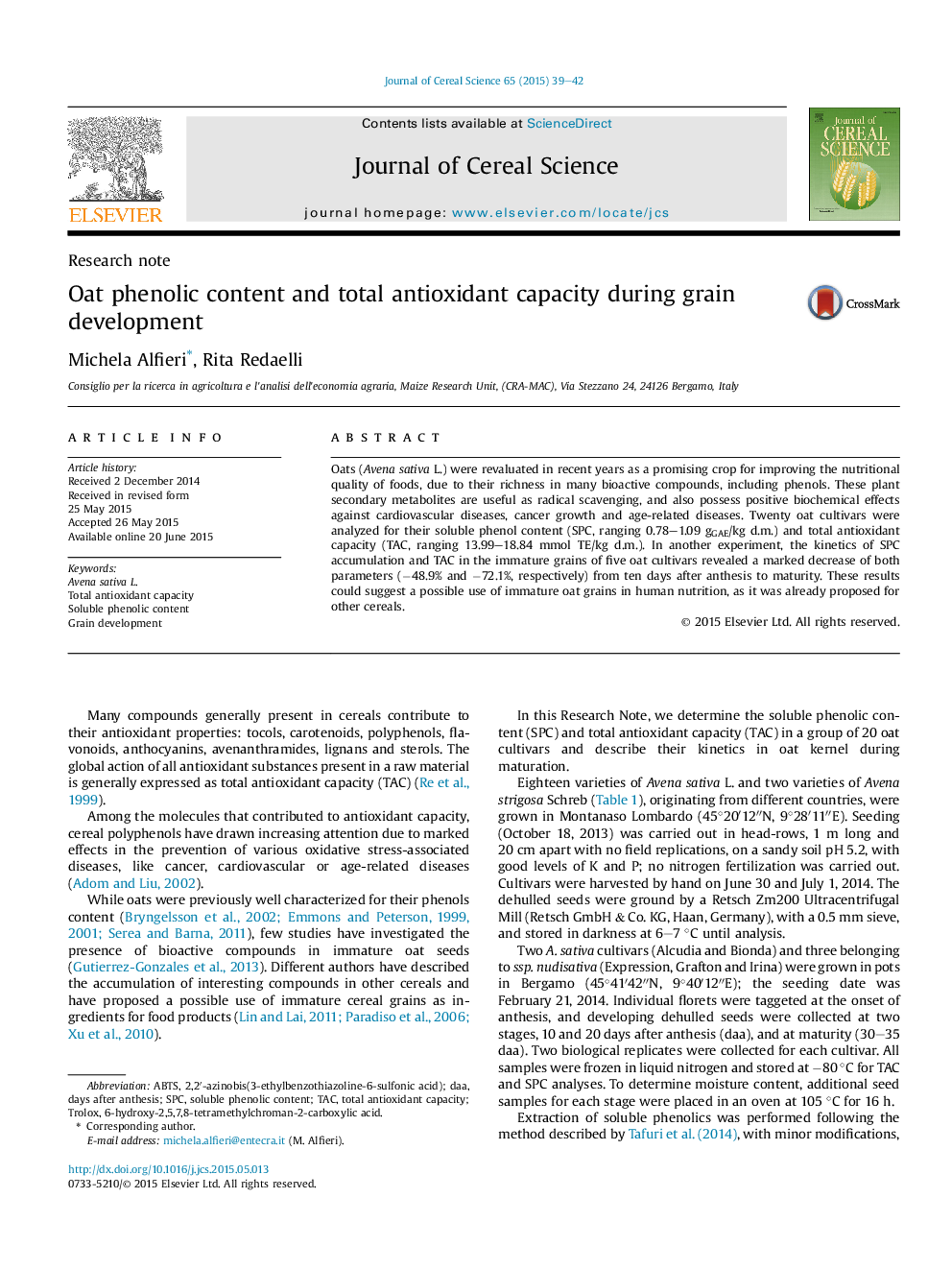| Article ID | Journal | Published Year | Pages | File Type |
|---|---|---|---|---|
| 6377848 | Journal of Cereal Science | 2015 | 4 Pages |
â¢Screening of 20 oat cultivars revealed good levels of total antioxidant activity.â¢Avena strigosa varieties seem to have an interesting composition in bioactive compounds.â¢TAC and SPC give higher values in immature seeds than at maturation.â¢Immature oat grains could have a potential use in human nutrition.
Oats (Avena sativa L.) were revaluated in recent years as a promising crop for improving the nutritional quality of foods, due to their richness in many bioactive compounds, including phenols. These plant secondary metabolites are useful as radical scavenging, and also possess positive biochemical effects against cardiovascular diseases, cancer growth and age-related diseases. Twenty oat cultivars were analyzed for their soluble phenol content (SPC, ranging 0.78-1.09 gGAE/kg d.m.) and total antioxidant capacity (TAC, ranging 13.99-18.84 mmol TE/kg d.m.). In another experiment, the kinetics of SPC accumulation and TAC in the immature grains of five oat cultivars revealed a marked decrease of both parameters (â48.9% and â72.1%, respectively) from ten days after anthesis to maturity. These results could suggest a possible use of immature oat grains in human nutrition, as it was already proposed for other cereals.
